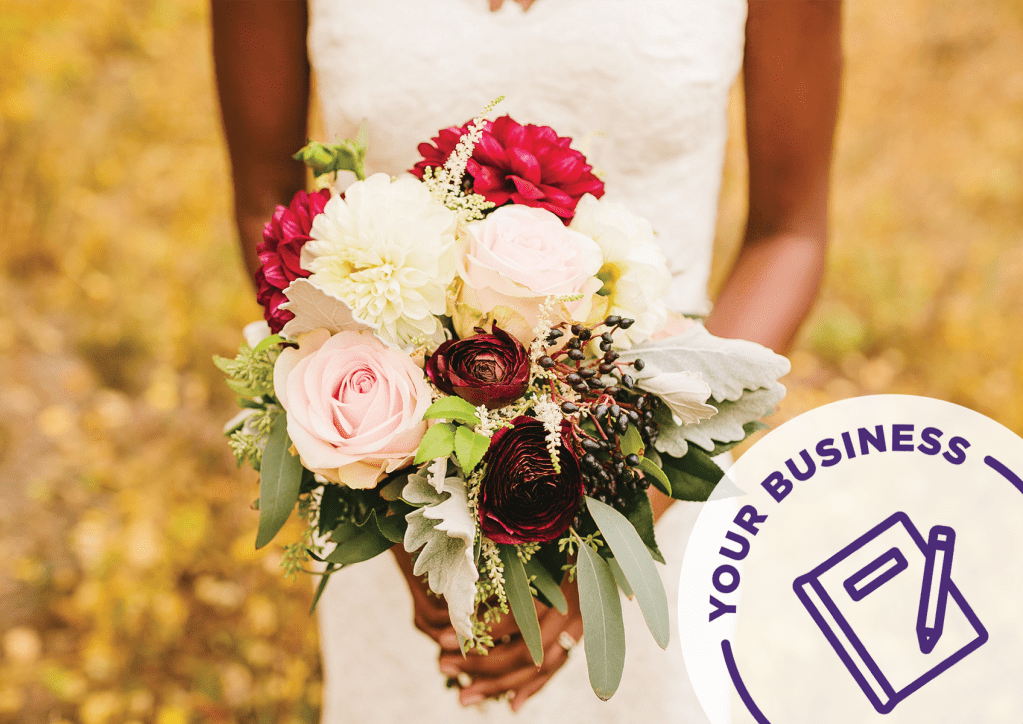Paycheck Protection Program (PPP) Loans FAQ

Updated on 6/8/2020
What is a PPP loan?
The PPP (Paycheck Protection Program) loan is a new type of forgivable loan created by the federal government as part of the Coronavirus Aid, Relief, and Economic Security (CARES) Act. It’s designed to help small businesses keep and pay their employees and other business expenses while the Coronavirus (COVID-19) pandemic disrupts their ability to do business.
How do I know if I am eligible for a PPP loan?
All businesses with 500 or fewer employees are eligible, including:
- Sole proprietorships
- Self-employed individuals
- Independent contractors
- Individual hotel properties or restaurant locations (even if part of a chain)
Businesses in some industries that have more than 500 employees might still be eligible if the SBA size standards for their industry are set above 500 employees.
What are the things that could make me ineligible?
Unlike for some loans, you don’t need a good credit history or to have a certain amount of money on hand to get a PPP loan. However, there are few things that could still disqualify you, including:
- If you were not in business before February 15, 2020
- If you’re currently going through bankruptcy
- If your business or any of its owners have previously been suspended, debarred, proposed for debarment, declared ineligible, or were voluntarily excluded from a federal loan program by a federal agency
- You previously had an SBA loan that is currently delinquent or that you defaulted on
- If you or any other owner of the business is currently under criminal charges, or was previously convicted or punished for a crime against a minor
How much money can I get through a PPP loan?
PPP loans payouts may equal up to 2.5 times your average monthly payroll costs for the last year. Most businesses will use their 2019 average monthly payroll costs, but you could elect to use a shorter period if you’re a seasonal or new business. The loan is capped at a maximum of $10 million and payroll costs are capped at $100,000 per year per employee.
When calculating your payroll costs, make sure to include salaries, wages, tips (based on past records or your reasonable best estimate) and benefits paid to employees. Fees paid to independent contractors would likely not count as employee wages and would be excluded from your payroll costs. If you’re a sole proprietor, independent contractor or self-employed, this could include your net earnings or business income. Detailed instructions can be found on the SBA’s sample application form.
Calculation cheat sheet: If you are a sole proprietor with $60,000 in business income in the last year, your average monthly payroll costs will be $60,000/12 = $5,000. If you apply for a PPP loan, then you would be eligible for up to 2.5 times that amount, or $12,500.
How do I calculate my average monthly payroll costs?
The first step is to determine your average monthly payroll costs for the last year (or shorter seasonal period) based on tax filings or other business accounting records. “Payroll costs” can include:
- For a small businesses:
- Salary, wages, commissions or tips on an annualized basis for each employee (capped at $100,000 per year per employee)
- Any employee benefits you paid for (e.g. paid vacation, parental leave, family, medical or sick leave, group health care benefits or insurance premiums, retirement benefits)
- State and local taxes you paid on compensation
- For a sole proprietor, independent contractor or self-employed individual:
- Wages, commissions, income, or net earnings from self-employment (capped at $100,000 per year)
Once you determine your total payroll costs for the year or shorter applicable seasonal period, you can divide by the number of months in that period to get your average monthly payroll costs (e.g. Annual payroll costs/# months = average monthly payroll costs).
Where do I apply for a PPP loan?
The SBA PPP loans are being offered through participating banks around the country, including most of the large national banks. Recent legislation also allocated a certain portion of the PPP loans to smaller, regional banks. You should contact your bank as soon as possible to see if they are participating in the PPP loan program. You can also search for participating SBA lenders here. Applications are on a first-come-first-served basis, and you may be able to get a loan faster or with an easier application process if you go through your existing bank. A bank may not be able to process your application unless you are a customer and the new customer process could take some time.
When can I apply?
Applications for small businesses (500 employees or fewer) and sole proprietorships opened on April 3, 2020 and applications for independent contractors and the self-employed opened April 10, 2020. Funds quickly ran out, and recent legislation extended the PPP to provide additional funds. Applications reopened on April 27th. Applications are first come, first served, and funds are expected to go quickly again. If you’d like to apply, you should contact your bank as soon as possible.
What is the process for applying for a PPP loan?
Each bank will put in place its own application process and you should check your lender’s website or contact them to get their application. As an example of what it may look like, the SBA recently provided a sample application here. It will be important to have your average monthly payroll costs (as described above), number of employees (if any) and documentation to support it on hand during the application process. You will also need to fill in some basic information about your business like your tax ID number, who owns your business, and how you plan to use the money.
The application will require you to certify that:
- The current economic uncertainty makes the loan necessary for ongoing operations
- The loan will be used for the permitted purposes (payroll, mortgage, lease, utilities)
- You have not and will not receive more than one PPP loan
- You will provide the lender with documentation verifying your number of employees, their payroll costs, mortgage interest payments, rent payments, and utilities for the 24-week period (formerly 8 weeks) after getting the loan.
- All the information you provided in your application and supporting documents are true and accurate, and be consistent with the information you’ve provided to the IRS for tax purposes.
What is the interest rate on the loan?
Right now the interest rate is set at a 1.0% fixed rate, but could be subject to change. The good news is that under the CARES Act, the interest rate cannot ever be set higher than a 4.0% fixed rate.
What is the term of the loan?
On June 5, 2020, the Paycheck Protection Flexibility Act (PPPFA) was signed into law, and extended the term of the loan from two years to five years. After this point, you will be required to pay back any portion that is not forgiven. Your first payment would be due after 6 months, however you can pay it back earlier without any penalties. Check the SBA website for updates, as loan terms may be subject to change.
How long will it take to get the loan?
The government and banks are working to get these loan applications approved as quickly as possible, but the exact time required for approval may vary. The Treasury has stated that they are working to put in place same-day loan approvals so that small businesses can get their money as quickly as possible. However, it may still take a few days to a couple of weeks to gather all the information you need and then up to a few weeks to pay out. To make the process as fast as possible, you should contact your bank immediately and see what you can do to speed the process along.
How many PPP loans can I get?
Just one. You also can’t have both a PPP loan and an economic injury disaster loan (EIDL). However, if you applied for an EIDRL before the PPP loan was available (April 3), you may be able to refinance the EIDL loan into the PPP loan.
How much of the PPP loan would be forgiven?
Your PPP loan might be entirely forgiven if you use it for the below purposes over the covered period after getting the loan:
- Maintaining employees and payroll costs (including largely the same number of employees, same salaries/average hours and same employee benefits)
- Interest on your business’s mortgage
- Rent on your business lease
- Utility payments for your business
The recent PPFA made it easier to qualify for forgiveness. The PPPFA extended the covered period for forgiveness from 8 weeks to 24 weeks after getting the loan (or December 31, 2020, whichever is earlier).
The PPPFA also relaxed requirements about how much of the PPP loan money has to go to payroll costs to qualify for forgiveness. Under the new law, at least 60%of the loan (previously 75%) should be put towards maintaining employees and payroll costs, with other expenses like interest, rent and utilities making up the remaining 40% (previously 25%).
If between February 15, 2020 and April 26, 2020 you laid off or cut salaries for some full-time employees because of COVID-19, you have until June 30, 2020 to restore their employment and salary levels to still qualify for forgiveness. According to recent PPP loan forgiveness guidance, if you offer employees their jobs back but they decline, if you terminated an employee for cause, or if they voluntarily resigned, it will not count against your forgiveness. Any mortgage, rent or utilities paid for must have been in place before February 15, 2020. Check the Treasury website regularly for updates, as guidance is still being updated for the PPFA and may be subject to change.
How much of the PPP loan would not be forgiven?
You would need to pay back the loan if you laid off some of your full-time employees and did not hire them back under the guidance above, or decreased wages by more than 25% for any employees making less than $100,000. You might also need to pay back some of the loan if more than 40% of your loan was used for purposes other than payroll costs.
How would I apply for loan forgiveness?
You can complete a loan forgiveness application and submit it to your specific lender and submit documents showing your number of employees, pay rates, benefits, mortgage, lease and utility payments during the 24-week period. The loan forgiveness application is still being updated for the PPFA, so check the Treasury website for updates.
Do I need to guarantee the loan?
No. The federal government is guaranteeing these loans.
Where can I find more information?
Here are some places you can go to learn more:
- U.S. Department of Treasury PPP Website
- SBA COVID-19 Resource Page
- SBA Sample PPP Loan Application Form
- NFIB Guide to New Federal Lending Options
- JPMorgan Chase Small Business CARES Act FAQ
- Community Bank PPP Loan Guidance
Information on the PPP loans and other government relief is changing rapidly, and we will update this FAQ as more information becomes available. This FAQ is for general informational purposes. If you have specific questions related to your business, we recommend that you contact a legal or financial advisor.
Photo Credit: Tayler Carlisle Photography
Let's grow your business together!
Start advertising on The Knot and WeddingWire, the top two wedding planning platforms.


